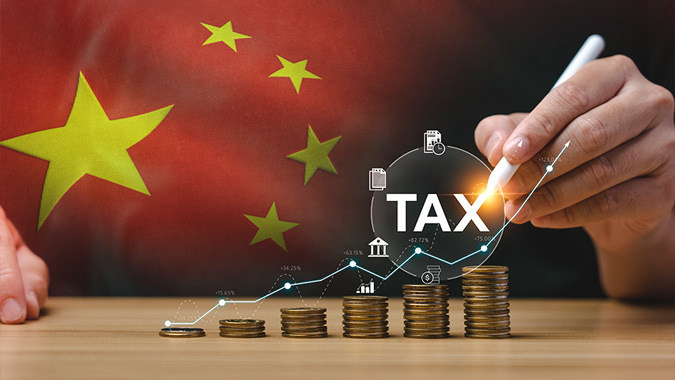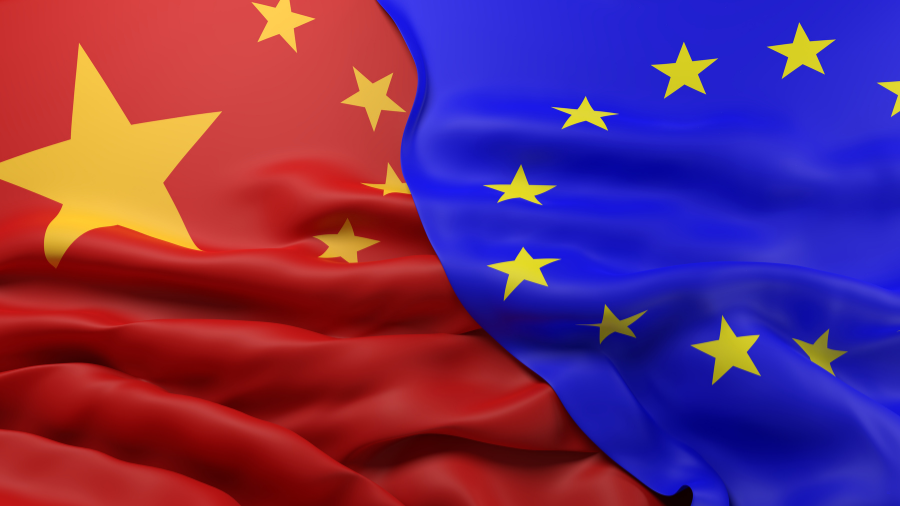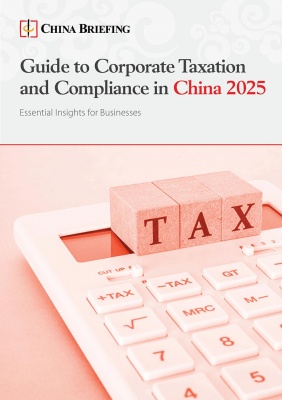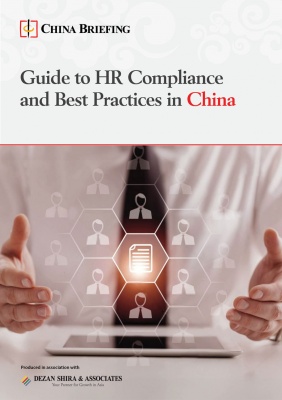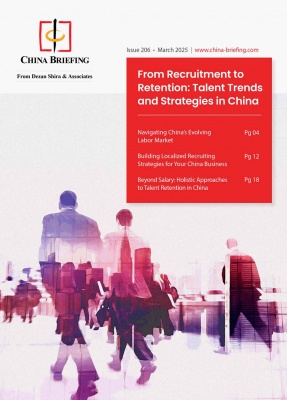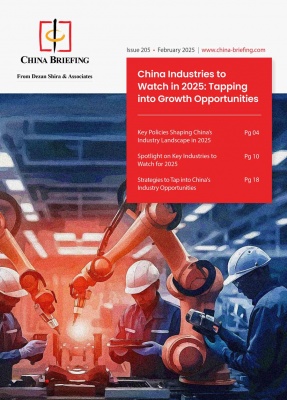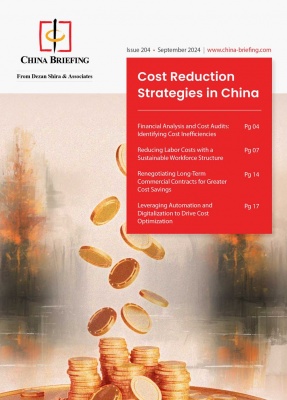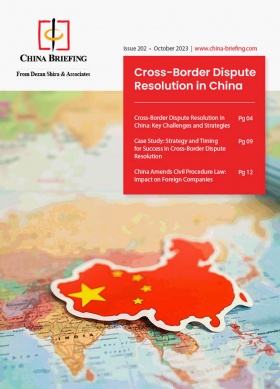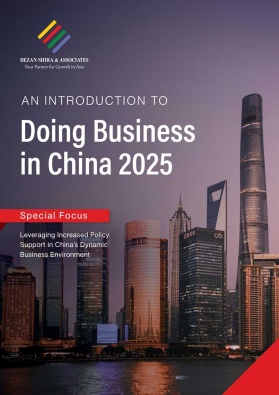China-Ecuador Economic Ties and Trade Prospects
China-Ecuador trade has kept increasing in recent years, driven by FTA incentives, shifting demand in China, and strategic infrastructure upgrades. This article unpacks the factors behind the growth and what lies ahead for the China–Ecuador economic partnership.
Diplomatic relations between China and Ecuador were officially established on January 2, 1980. Since then, bilateral ties have progressed steadily, underpinned by deepening political trust and economic cooperation. In January 2015, the two countries elevated their relationship to a strategic partnership, and in November 2016, it was further upgraded to a comprehensive strategic partnership.
China is currently Ecuador’s second-largest trading partner, while Ecuador ranks as China’s eighth-largest trading partner in Latin America. From January to October 2024, bilateral trade in goods reached US$11.53 billion, reflecting a year-on-year growth of 1.4 percent. China’s main exports to Ecuador include telephones, metal products, home appliances, passenger vehicles, and industrial machinery and components. In return, China primarily imports crude oil, shrimp, bananas, minerals, and timber from Ecuador.
The bilateral economic relationship has also been strengthened through institutional frameworks. In December 2018, both countries signed a Memorandum of Understanding to cooperate under the Belt and Road Initiative. In December 2022, Ecuador hosted the 15th China–Latin America Business Summit. Most recently, the China–Ecuador Free Trade Agreement (FTA), signed in May 2023, officially entered into force on May 1, 2024, marking a new chapter in bilateral economic engagement.
China–Ecuador trade
Since 2020, bilateral goods trade between China and Ecuador has grown not only in volume but also in quality. Ecuador’s exports to China have shown consistent improvement, reflecting deepening trade ties. China has maintained its position as Ecuador’s second-largest trading partner and has become the top destination for Ecuador’s signature exports, such as shrimp and copper concentrate. It is also a key market for Ecuadorian crude oil and bananas.
From January to October 2024, total bilateral trade in goods reached US$11.53 billion, marking a year-on-year increase of US$151.88 million, or 1.4 percent. During this period, China’s exports to Ecuador amounted to US$4.89 billion—a decrease of US$55.18 million from the same period in 2023, representing a 0.9 percent decline. Conversely, China’s imports from Ecuador rose to US$6.65 billion, up US$207.06 million, or 3.1 percent, year-on-year.
The trade balance during the first ten months of 2024 stood at -US$1.76 billion in Ecuador’s favor, widening from -US$1.50 billion during the same period in 2023. In October 2024 alone, the trade deficit for China reached -US$236.24 million, underscoring the increasing share of Ecuadorian exports in bilateral trade.
|
Bilateral Goods Trade between China and Ecuador |
||||||
| Year | Total trade (US$billion) | China’s exports (US$billion) | China’s imports (US$billion) | Total trade YoY change (%) | Exports YoY change (%) | Imports YoY change (%) |
| 2019 | 7.25 | 3.63 | 3.62 | 27.1 | -2.3 | 82.0 |
| 2020 | 7.56 | 3.25 | 4.31 | 4.0 | -10.3 | 18.3 |
| 2021 | 10.94 | 5.48 | 5.46 | 44.5 | 68.6 | 26.4 |
| 2022 | 13.09 | 6.29 | 6.80 | 19.7 | 14.8 | 24.6 |
| 2023 | 13.65 | 5.86 | 7.79 | 4.7 | -5.8 | 14.2 |
| Jan-Oct 2024 | 11.53 | 4.89 | 6.65 | 1.4 | -0.9 | 3.1 |
Source: General Administration of Customs of China (GACC)
|
Top China Imports from Ecuador in 2024 |
|
| Category | Value (US$, million) |
| Fish and crustaceans, mollusks, and other aquatic invertebrates | 3,117 |
| Mineral fuels, mineral oils and products of their distillation; bituminous substances; mineral waxes | 2,984 |
| Ores, slag, and ash | 1,407 |
| Edible fruit and nuts; peel of citrus fruit or melons | 168 |
| Wood and articles of wood; wood charcoal | 130 |
Source: ITC Trade Map
|
Top China Exports to Ecuador in 2024 |
|||||||||||||||||||||||||||||||||||||||||
| Category | Value (US$, million) | ||||||||||||||||||||||||||||||||||||||||
| Nuclear reactors, boilers, machinery, and mechanical appliances; parts thereof | 1,028 | ||||||||||||||||||||||||||||||||||||||||
| Electrical machinery and equipment and parts thereof; sound recorders and reproducers, television image and sound recorders and reproducers, and parts and accessories of such articles | 853 | ||||||||||||||||||||||||||||||||||||||||
| Vehicles other than railway or tramway rolling stock, and parts and accessories thereof | 835 | ||||||||||||||||||||||||||||||||||||||||
| Iron and steel | 404 | ||||||||||||||||||||||||||||||||||||||||
| Plastics and articles thereof | 385 | ||||||||||||||||||||||||||||||||||||||||
Source: ITC Trade Map
China–Ecuador investment
Chinese companies have actively expanded their footprint in Ecuador, particularly in the oil and mining sectors. Several state-owned enterprises are involved in large-scale resource development projects. Notably, China National Petroleum Corporation (CNPC) and Sinopec jointly operate an oil block development project, while China Railway Construction Copper Crown Investment Co., Ltd. has fully invested in the Mirador copper mine. In both projects, Chinese entities hold a 100 percent stake, reflecting strong investor confidence and control over project operations.
Ecuador’s investment appeal
Ecuador presents a range of strategic advantages that continue to attract Chinese investors:
- Favorable geography and rich resources: Located on the northwestern edge of South America, Ecuador faces China across the Pacific Ocean and is one of the closest South American countries to China. It can serve as a gateway or transshipment hub for Chinese enterprises entering the broader Latin American market. The country’s diverse geography—comprising islands, coastal areas, mountains, and rainforests—supports a wide range of agricultural, aquaculture, and resource-based industries. Ecuador is particularly rich in petroleum and copper reserves.
- Abundant, youthful labor force: Ecuador has a relatively young and ample workforce. With 13 million people of working age, approximately 70.9 percent of the total population, the country offers a solid labor base. Wages are comparatively low, making it a cost-effective destination for labor-intensive industries.
- Industrial underdevelopment and strong infrastructure demand: Ecuador’s industrial base remains relatively underdeveloped, with limited availability of industrial goods, creating significant opportunities for market expansion. Infrastructure development has been a consistent priority for successive governments. While some improvements have been made, disparities remain across regions, and the need for investment in electricity, water resources, transportation, housing, and distribution networks remains high. Recent energy shortages have further highlighted the urgency of enhancing power infrastructure. Additionally, emerging sectors such as 5G, the Internet of Things, and big data offer significant potential for future investment.
China–Ecuador agreements
The institutional framework supporting China–Ecuador economic relations has evolved over the years, underpinned by a series of bilateral agreements covering investment protection, taxation, industrial cooperation, and trade.
In 1994, China and Ecuador signed the Agreement on the Encouragement and Reciprocal Protection of Investments. However, in May 2017, Ecuador’s National Assembly voted to terminate 12 bilateral investment treaties, including the one with China, citing constitutional concerns over international arbitration provisions. While the previous Lasso administration expressed a willingness to renegotiate a new investment agreement with China, constitutional constraints hindered substantive progress. The current administration has focused on domestic security and financial issues, and there have been no significant developments on this front, with limited prospects for near-term progress.
Despite setbacks in investment protection, the two countries have advanced cooperation in other legal and commercial areas. In 2013, they signed the Agreement on the Avoidance of Double Taxation and the Prevention of Tax Evasion, which came into force on March 6, 2014, and has been in effect since January 1, 2015.
Further deepening bilateral economic cooperation, several key memoranda were signed in 2016. These included:
- A Memorandum of Understanding on Cooperation in Industrial Parks and Special Economic Zones, signed between China’s Ministry of Commerce and Ecuador’s Ministry of Industry and Productivity;
- A Framework Agreement on Production Capacity and Investment Cooperation, signed between China’s National Development and Reform Commission and Ecuador’s Strategic Coordination Ministry.
In December 2018, the two governments signed a Memorandum of Understanding on Belt and Road Initiative cooperation, aligning Ecuador with China’s global infrastructure and connectivity strategy.
A major milestone was reached in May 2023, when China and Ecuador signed a bilateral FTA—China’s 20th FTA overall and Ecuador’s first with an Asian country. The agreement officially entered into force on May 1, 2024, opening new opportunities for trade and investment in both directions.
As of now, the two sides have yet to conclude agreements in emerging areas such as currency swaps, digital economy cooperation, or blue economy development.
Why have Ecuador’s exports to China surged since 2020?
Ecuador’s rapid export growth to China since 2020 is the result of multiple reinforcing factors, with the signing and implementation of the China–Ecuador FTA playing a pivotal role. After years of negotiation, the two countries signed the FTA in May 2023—Ecuador’s first with an Asian partner. It officially entered into force on May 1, 2024. The agreement will gradually eliminate tariffs on over 90 percent of traded goods, including Ecuador’s core exports such as shrimp, bananas, and fresh flowers.
Although the agreement only recently took effect, the anticipation of policy benefits had already begun influencing trade. For example, Ecuador’s shrimp exports to China surged by over 30 percent year-on-year in 2023 as many producers expanded operations early to capture market opportunities.
At the same time, a strong alignment between China’s shifting demand structure and Ecuador’s supply strengths has accelerated trade momentum. Post-pandemic recovery in China’s food service industry drove demand for high-protein foods. Ecuador, as the world’s largest supplier of whiteleg shrimp, was well-positioned to meet this need. Meanwhile, China’s consumption upgrade trend has led to increased demand for high-quality fruits, organic agricultural products, and fresh flowers—all areas where Ecuador enjoys a natural advantage thanks to its favorable climate and advanced agricultural practices. Exports of Ecuadorian bananas and roses to China have steadily increased, deepening bilateral trade ties.
Logistics and infrastructure improvements have further supported this export boom. Chinese enterprises have contributed to the upgrading of Ecuadorian ports, while broader improvements to Latin America’s logistics networks have shortened shipping times and reduced supply chain risks. E-commerce has also played an increasingly important role. Platforms like Alibaba are helping Ecuadorian products reach Chinese consumers more directly, bypassing traditional intermediaries. This dual “online + offline” approach has become a standout feature of recent trade growth.
From a geopolitical and economic standpoint, deeper China–Latin America relations and evolving global trade dynamics have provided a favorable backdrop. Ecuador’s active engagement in the Belt and Road Initiative has facilitated cooperation on energy and infrastructure projects, indirectly boosting trade confidence. Simultaneously, U.S.–China trade frictions have prompted China to diversify its import sources, while Ecuador has sought to reduce its reliance on the U.S. and European markets—creating a complementary strategic impetus for stronger bilateral trade.
Policy coordination has also been instrumental. Frequent high-level exchanges have led to trade facilitation measures such as financing support from China Exim Bank, helping Ecuadorian exporters scale production and enhance competitiveness. Though sustainability concerns—such as the environmental impact of shrimp farming—remain, Ecuador has responded by upgrading technology and environmental standards in an effort to balance trade expansion with ecological stewardship.
Looking ahead, Ecuador’s exports to China are expected to maintain their upward trajectory, driven by the continued implementation of tariff reductions under the FTA and emerging cooperation in sectors like green energy and digital trade. However, rising competition from regional peers such as Peru and Chile, both vying for greater shares of the Chinese market, underscores the need for Ecuador to strengthen product differentiation, ensure quality, and build resilient supply chains to weather external uncertainties.
Also Read:
- China-Latin America and the Caribbean: Investment, Trade, and Future Prospects
- China Outbound Direct Investment (ODI) Tracker: 2024-25
- US-China Relations in the Trump 2.0 Era: A Timeline
About Us
China Briefing is one of five regional Asia Briefing publications, supported by Dezan Shira & Associates. For a complimentary subscription to China Briefing’s content products, please click here.
Dezan Shira & Associates assists foreign investors into China and has done so since 1992 through offices in Beijing, Tianjin, Dalian, Qingdao, Shanghai, Hangzhou, Ningbo, Suzhou, Guangzhou, Haikou, Zhongshan, Shenzhen, and Hong Kong. We also have offices in Vietnam, Indonesia, Singapore, United States, Germany, Italy, India, and Dubai (UAE) and partner firms assisting foreign investors in The Philippines, Malaysia, Thailand, Bangladesh, and Australia. For assistance in China, please contact the firm at china@dezshira.com or visit our website at www.dezshira.com.
- Previous Article China Outbound Direct Investment (ODI) Tracker: 2024-25
- Next Article US-China Relations in the Trump 2.0 Era: A Timeline


